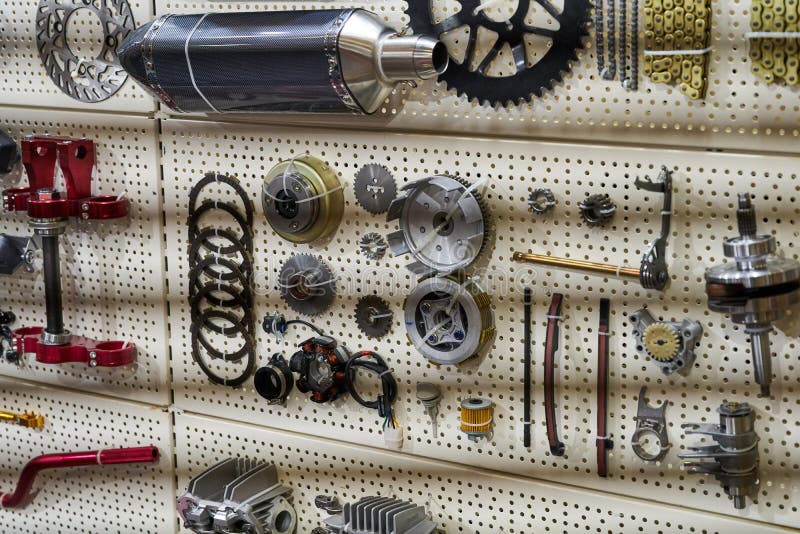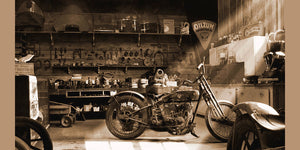Discover Quality Moto Parts NZ for All Your Motorcycle Requirements
Discover Quality Moto Parts NZ for All Your Motorcycle Requirements
Blog Article
Understanding the Important Parts of a Motorbike: A Comprehensive Overview for Enthusiasts
For bike lovers aiming to raise their riding experience and guarantee their bikes run smoothly, recognizing the vital components of a motorbike is paramount. Each aspect, from the engine's detailed workings to the vital role of the stopping systems, not only affects performance however also safety and convenience. This guide will certainly go through the basic parts that every rider ought to be acquainted with, making it possible for educated choices in both maintenance and potential upgrades. As we start this exploration, one must ask: just how does each part interact to create the seamless trip every enthusiast seeks?
Engine Parts

The camshaft plays a crucial duty in regulating the timing of the engine's shutoffs, ensuring the precise opening and closing essential for effective gas and air intake, along with exhaust expulsion. This timing is crucial to keeping optimal engine performance and performance. Additionally, the carburetor or gas shot system, depending on the motorbike version, is in charge of blending air with fuel in the appropriate proportion for burning.
The air conditioning system, either air or liquid-based, functions to keep the engine's temperature within operational restrictions, preventing overheating and making sure long life - mx gear nz. Each element, thoroughly made and incorporated, adds to the smooth procedure of the engine, defining the motorbike's power outcome and total efficiency
Transmission System
Indispensable to the motorcycle's performance, the transmission system guarantees efficient power transfer from the engine to the wheels. This system consists of several crucial parts, consisting of the clutch, transmission, and last drive, each playing an essential function in translating the engine's power right into activity. The clutch, usually operated by a hand bar, serves to engage and disengage the engine from the transmission, allowing for smooth gear changes and controlled velocity.
The transmission, frequently referred to as the transmission appropriate, includes a collection of gears that cyclists can by hand change via to change the bike's speed and torque output. These equipments are organized in a series that allows the motorcycle to accelerate efficiently and preserve optimal engine performance throughout different rates. A lot of motorbikes utilize a consecutive transmission, needing the biker to shift equipments in an established order.
Braking Mechanisms
While recognizing the transmission system is crucial to using a bike's power, similarly essential is the ability to regulate and quit that power properly, which is where braking systems come right into play. Brakes are vital for safety and efficiency, supplying the rider with the required control to browse different terrains and problems. Generally, bikes feature 2 types of stopping systems: disc brakes and drum brakes.
Disc brakes are a lot more prevalent in modern-day motorcycles as a result of their remarkable performance. They contain a brake disc, caliper, and pads. When activated, the caliper squeezes the brake pads versus the spinning disc, transforming kinetic energy right into heat, consequently slowing the wheel. This system uses far better warm dissipation, regular performance, and boosted stopping power, particularly in wet problems.
Conversely, drum brakes, though less typical, are still located in some motorcycles. They work by pressing brake shoes versus the internal surface area of a drum connected to the wheel. While typically much less reliable in warm dissipation and quiting power, drum brakes are less complex and much more economical.
Comprehending these stopping systems' subtleties permits riders to maintain their motorcycles correctly and appreciate the engineering that makes sure secure and reliable quiting.
Suspension and Guiding
Suspension and guiding systems are crucial parts that dramatically affect a bike's handling and ride convenience. The shock absorber, containing forks at the front and shock absorbers at the back, soaks up roadway irregularities, enhancing stability and control. Front forks, usually telescopic or inverted, compress and rebound to mitigate impacts, while back shock absorbers keep tire contact with the road, essential for traction and safety.
Guiding, centered around the handlebars, attaches the cyclist to the bike's directional control. The steering head bearings ensure smooth procedure, permitting exact maneuverability. Proper placement and upkeep of these bearings are vital for predictable steering feedback and minimizing moto parts nz biker fatigue.
The suspension's adjustability is an additional important element; preload, damping, and rebound settings permit personalization to fit different riding styles and conditions. This adaptability is important for optimizing performance, whether navigating city streets or tackling tough tracks. Developments like digital suspension systems use real-time adjustments, enhancing adventure high quality across varied terrains.

Electrical Equipments
After making sure a smooth and controlled ride with reliable suspension and steering systems, interest transforms to the electrical systems, an essential aspect of contemporary bikes. These systems play an important duty not only in starting the engine however also in powering different parts that enhance the capability and safety and security of the motorbike.
At the heart of a motorcycle's electric system is the battery, which stores electrical energy needed for beginning the engine and powering auxiliary systems - mx gear nz. The alternator or generator, paired with the rectifier-regulator, makes certain the battery remains charged while the motorbike functions, transforming power right into electrical energy and maintaining voltage levels
The ignition system, another important part, is accountable for sparking the air-fuel combination in the engine's cyndrical tubes. Modern motorcycles frequently utilize an electronic ignition system, using better efficiency and reliability compared to typical systems.
Illumination systems, consisting of fronts lights, tail lights, and indicators, are likewise essential, guaranteeing visibility and safety for the biker. Additional electronic parts such as sensing units, control devices, and shows add to sophisticated functions like fuel injection management, anti-lock braking systems (ABDOMINAL MUSCLE), and electronic control panels, better improving the riding experience.
Verdict
A comprehensive comprehension of a motorbike's necessary parts, consisting of the engine, transmission system, stopping systems, suspension, steering, and electric systems, is essential for enthusiasts aiming to enhance convenience, performance, and safety and security. Mastery of these components enables for educated decisions pertaining to maintenance and upgrades, inevitably enhancing the riding experience. By incorporating this understanding, cyclists can ensure their motorcycles run at peak efficiency and dependability, thereby making the most of both pleasure and longevity of their automobiles.
For motorcycle fanatics looking to raise their riding experience and ensure their bikes run efficiently, comprehending the vital elements of a bike is vital.Important to the bike's performance, the transmission system ensures efficient power transfer from the engine to the wheels.While comprehending the transmission system is vital to utilizing a bike's power, just as vital is the ability to control and stop that power efficiently, which is where stopping systems come right into play. Typically, motorcycles feature two types of braking systems: disc brakes and drum brakes.
An extensive understanding of a motorbike's necessary parts, consisting of the engine, transmission system, stopping systems, suspension, guiding, and electrical systems, is important for lovers aiming to enhance safety, convenience, and efficiency.
Report this page